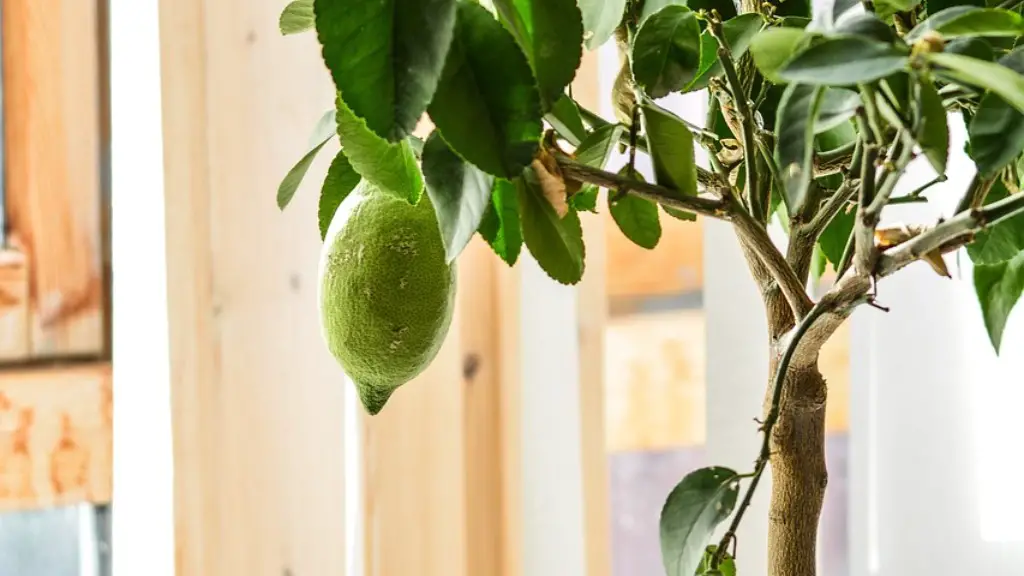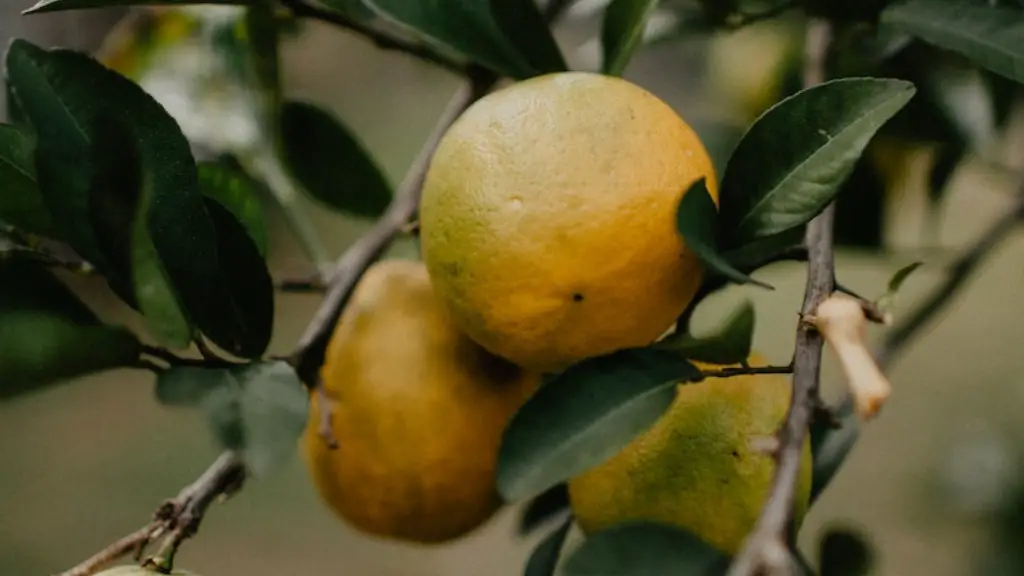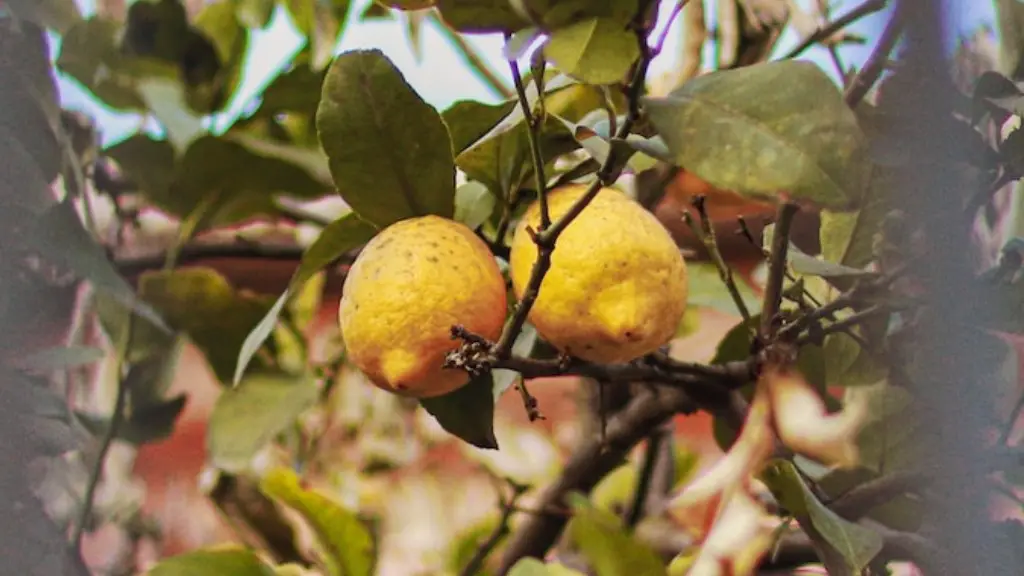Apple trees require nutrient-rich soil for healthy growth and to produce high-quality apples. The best type of fertilizer for apple trees—specifically those in an orchard or backyard—is a slow-release, balanced fertilizer. This fertilizer should contain equal parts of nitrogen, phosphorus, and potassium. The nitrogen helps the tree grow healthy leaves, the phosphorus promotes root growth, and the potassium increases the amount of flowers, fruits, and disease tolerance.
It is important to choose a fertilizer that is tailored to the needs of your particular apple tree. The nutrient requirements of different varieties of apple trees vary. For instance, if your apple tree is young, it will need more nitrogen than an older tree. An older apple tree may require more phosphorous and potassium in its fertilizers to ensure ample fruit production.
It is important to remember that with any fertilizer, too much of a good thing can be bad. Too much nitrogen will promote leaf growth over fruit production. Too much phosphorus can actually discourage root growth, while too much potassium may produce bitter fruits. For this reason, it is important to research the exact nutrient needs of your apple tree and select a fertilizer accordingly.
You will also have to take into consideration the climate and soil of your apple tree’s location. If your orchard is located in an arid or dry climate, for example, you may need to use wetting agents to help block water runoff, which can cause leaching of valuable nutrients. On the other hand, if your location is too wet, you may need to invest in an enhanced nutrient-release fertilizer.
Lastly, the timing of fertilizer applications is just as important as the type of fertilizer you are using. Generally, fertilizer should be applied during the spring when the apple buds break and then again 2-3 weeks later during bloom. A third application may be added several weeks after that. If you have an established tree or an orchard, fertilizer should be applied in the fall as well to replenish the depleted nutrients.
Apple Tree Pruning for Maximum Fruit Production
Apple tree pruning is an important step in ensuring maximum fruit production. Pruning helps to control the shape and size of the tree, as well as to remove damaged or diseased branches. Pruning can also increase the airflow within the tree, reduce the spread of diseases, and allow more light and nutrients to reach the fruit. Additionally, pruning allows more branches to remain productive which in turn increases the amount of fruits produced.
When pruning apple trees, it is important to use the right pruning techniques. Generally, the two most common are thinning and heading back. Thinning is done by removing the whole branch at its origin, while heading back is done by cutting the branch back to a lateral branch. Knowing which branches to remove is also important—those that are dead, diseased, or damaged should be removed, as well as those growing inappropriately—such as crossing or in a vertical direction.
Pruning should usually be done during the time of dormancy in winter. This allows wounds from pruning to heal more quickly, and reduces susceptibility to disease and pests. Proper pruning tools, such as loppers, pruning shears, saws and pole pruners, should also be used in order to get the job done correctly.
When pruning apple trees, it is important to remember that removing too much of the tree can result in decreased flavor and size of the fruits it produces. It is important to strive to maintain a balance between growth and production. If you are not sure how to prune your apple tree, contact a local tree expert to get the job done correctly.
Planting Apple Trees on Hillsides and Slopes
Apple trees can be grown on hillsides and slopes, but there are a few things that need to be considered when doing so. The first is the type of soil. Sandy, clay-based and rocky soils can all be found on hills and slopes, and each requires its own set of soil management techniques. Also, the topography of the area should be taken into account to ensure adequate drainage.
The second concern is how susceptible the slope is to erosion. Planting windbreaks, hedgerows, and ground cover plants can help to reduce the harmful effects of wind, soil movement, and water erosion. Additionally, planting terraces can help to break up the slope, while providing additional level areas for growing apples. Special attention should also be paid to the placement of rootstocks and trellises, as well as ensuring there is adequate access for maintenance and harvesting.
When planting on sloped terrain, it is important to start with young, healthy apple trees that have been specifically bred for the area that you are planting. The apple trees should be planted on the warmer, south-facing side of the slope, which will provide necessary sunlight for optimum growth. Pruning and training should also be done in the same manner as orchards on flat terrain. Special attention should be paid to structuring canopies and should aim to evenly distribute foliage over the tree.
Lastly, due to the effects of gravity, gravity irrigation is not an ideal choice for slopes. Poor irrigation practices can quickly threaten the health of trees on hillsides. Instead, irrigation systems such as water tanks, sprinklers, and drip systems should be employed.
The Effects of Temperature on Apple Trees
Temperature plays an important role in the growth and development of apple trees. For example, temperatures that are too cold can lead to flower and leaf damage, while temperatures too hot can reduce fruit set and lead to uneven fruit sizes. Problems can also occur during pollen production and pollination if temperatures are too cold or too hot.
Apple trees have evolved over time to grow in areas with a wide range of temperature ranges. Most apple varieties are tolerant of extreme temperatures, but each variety can differ in its tolerance. It is important to familiarize yourself with the temperature requirements of your particular variety to ensure the best yield.
Furthermore, temperatures can also affect the amount and timing of fertilizer applications. If temperatures are too cold, slow-release fertilizers will not be able to release the nutrients needed by the tree. In these situations, it may be best to delay fertilization until temperatures rise.
It is important to remember that soil temperature is usually cooler than the air. Therefore, during the winter months, soil temperatures should be monitored to ensure that apple root growth is not too cold for healthy growth. If temperatures stay too low for too long, frost damage can occur.
Insects and Pests of Apple Trees
Apple trees are susceptible to damage from various insects and pests. Most commonly, apple trees have to deal with codling moths, aphids, scale insects, leafrollers, borers, and spider mites. All of these pests can cause leaf damage, fruit damage, or stunted growth in apple trees.
Insects and pest infestation can be prevented with proper maintenance and pest management techniques. These include proper pruning, ensuring adequate ventilation within the tree, applying organic pesticides, and using ant and wasp baits. Also, using beneficial insects, such as ladybugs, can help to reduce the number of pests in your apple tree.
Monitoring your apple tree on a regular basis can help you identify and eradicate pests early on, before they become a problem. If any damage or pest population is noticed, contact a tree expert for help or use a specialized pesticide. Depending on the severity of the pest infestation, multiple treatments may be necessary.
It is also important to note that pesticides used outdoors can have damaging effects on the environment. Therefore, take precautions when choosing and applying pesticides. If possible, opt for organic pesticides or sprays specially formulated for apple trees.
Fertilizer Application for Apple Trees
Applying fertilizer to apple trees is an important step in ensuring healthy growth and productivity. Fertilizing helps to replenish soil nutrients that apple trees need to produce optimal fruits. The type, amount, and frequency of fertilizer applications will vary depending on the type of apple tree and its soil composition.
The best type of fertilizer to use on your apple tree depends on its nutrient needs. To determine this, you will need to have your soil tested. Generally, a slow-release, balanced fertilizer that contains equal parts of nitrogen, phosphorus, and potassium is the best choice. Too much of any one nutrient can reduce the quality and size of fruits, so be sure to use the correct amount.
When applying fertilizer, it is important to observe proper timing. Generally, fertilizer should be applied during the spring when the apple buds break and then again 2-3 weeks later during bloom. A third application may be added several weeks after that. For established apple trees or those in an orchard, fertilizer should be applied in the fall as well to replenish the depleted nutrients.
It is important to remember that with any fertilizer, too much of a good thing can be bad. Follow the instructions that come with your fertilizer and always err on the side of caution. Monitor your tree closely over the weeks and months following your application to make sure you are achieving the desired results.




